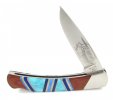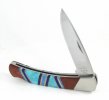-
The BladeForums.com 2024 Traditional Knife is ready to order! See this thread for details: https://www.bladeforums.com/threads/bladeforums-2024-traditional-knife.2003187/
Price is$300$250 ea (shipped within CONUS). If you live outside the US, I will contact you after your order for extra shipping charges.
Order here: https://www.bladeforums.com/help/2024-traditional/ - Order as many as you like, we have plenty.
You are using an out of date browser. It may not display this or other websites correctly.
You should upgrade or use an alternative browser.
You should upgrade or use an alternative browser.
I like it better now.
- Thread starter bertl
- Start date
- Joined
- Dec 8, 2016
- Messages
- 1,343
That's a HUGE improvement!!
You'll have to share the dark secrets of your swordcraft, black magic and wizardry.

You'll have to share the dark secrets of your swordcraft, black magic and wizardry.
bertl
Gold Member
- Joined
- Feb 17, 2011
- Messages
- 2,547
did you remove the etch yourself
I did it all by myself. I might work on it more, but it's close.
Bert
- Joined
- Apr 19, 2005
- Messages
- 5,533
I have removed one or two with polishing compound, pick your choice. Buffing compound of green or white color or Mother's Aluminum Wheel polish are the ones I have on hand. Brasso seems a larger grit size. Keeping strokes same direction as factory polish lines. But he will answer. I will admit I am bad about using a dremel with a small cloth wheel and dremel red polish also but you need to practice on a user to get the feel of the dremel. I try to stay away from the edge and anytime your polishing near an edge wear a glove or wrap your fingers in blue or green painting tape for safety. Eye safety also. 300
DOGPOUND77
Gold Member
- Joined
- Sep 4, 2017
- Messages
- 2,175
try using "maas" been using fer years and you can buy online...use it on my 68 Camaro ragtop.....
bertl
Gold Member
- Joined
- Feb 17, 2011
- Messages
- 2,547
I would be interested in how you did it. /Roger
First of all, I am a woodworker not a metalworker so this is new territory and I'm sure there will be comments about, "you should have ..." As I said before, I figured as long as I didn't really screw it up either Heath or Leroy could come to the rescue.
I don't have a buffer, but the thing I do have is plenty of time. In woodworking the main difference between a skilled amateur and someone making a living as a woodworker is time. That means the professional has to use machines, try not to make mistakes and, if mistakes are made, know how to compensate quickly. It also means knowing how to get the same effect using different techniques and tools. Since I retired I have really enjoyed avoiding the noisy machines, and using hand tools as much as possible.
All of this is the roundabout way of saying that I used sandpaper for this job. I started with 600 grit, using a light circular motion, and then followed with 800, 1000, 1500, and 2000. After the 600 grit I kept all motion perpendicular to the length of the blade. The action was rapid, not heavy.
The result is a mirror finish that compares pretty well with the other side of the blade. I still have plenty of time and some 2500 grit, so I may give a finishing touch to the blade. I don't think I'll to send it to Heath or Leroy.
Bert
First of all, I am a woodworker not a metalworker so this is new territory and I'm sure there will be comments about, "you should have ..." As I said before, I figured as long as I didn't really screw it up either Heath or Leroy could come to the rescue.
I don't have a buffer, but the thing I do have is plenty of time. In woodworking the main difference between a skilled amateur and someone making a living as a woodworker is time. That means the professional has to use machines, try not to make mistakes and, if mistakes are made, know how to compensate quickly. It also means knowing how to get the same effect using different techniques and tools. Since I retired I have really enjoyed avoiding the noisy machines, and using hand tools as much as possible.
All of this is the roundabout way of saying that I used sandpaper for this job. I started with 600 grit, using a light circular motion, and then followed with 800, 1000, 1500, and 2000. After the 600 grit I kept all motion perpendicular to the length of the blade. The action was rapid, not heavy.
The result is a mirror finish that compares pretty well with the other side of the blade. I still have plenty of time and some 2500 grit, so I may give a finishing touch to the blade. I don't think I'll to send it to Heath or Leroy.
Bert
Are you using wet dry paper with oil? Or just using dry sandpaper?
O.B.
- Joined
- Jan 4, 2018
- Messages
- 3,074
Your time, as plentiful as it may be, was well spent...and your patience paid off big! A huge improvement. The before & after shot reminds me of how they show you the before and after for the chicks on those late night tv hydroxycut commercials. Big difference!
bertl
Gold Member
- Joined
- Feb 17, 2011
- Messages
- 2,547
Are you using wet dry paper with oil? Or just using dry sandpaper?
Starting at the 1000 grit, I began using a lubricant.
This will be a good day to stay inside and finish this project. The wind is already gusting to 55-60 and will increase some as the day goes on.
Ber
Old Hunter
Gold Member
- Joined
- Jul 12, 2012
- Messages
- 10,040
Bert, often I don't mind a blade etch (on a standard grade knife), but your knife has such beautiful handles that the etch actually detracted from the beauty. It looks much, much better now. OH
bertl
Gold Member
- Joined
- Feb 17, 2011
- Messages
- 2,547
often I don't mind a blade etch (on a standard grade knife)
I pretty much like a plain blade and this was essentially an advertising logo that was out of proportion to the blade.
Bert
- Joined
- Dec 8, 2016
- Messages
- 1,343
The mania to clutter up beautiful blades with information is a reflection on the society overall.
Almost everybody is trying to sell something and they want your attention and they'll do whatever it takes to get it.
They have you listening to aggressive voices in commercials on your car radio as you drive along highways infested with huge billboards imploring you to buy a multitude of products. Everywhere you go on the internet you're barraged with advertising.
I rarely watch the commercial TV due to the deluge of advertising. This crap is everywhere.
Greed destroys the natural beauty of the world.
Cleaning up ONE BLADE is a beginning.
GOOD WORK, BERTL!!!!
May the trend spread.
Almost everybody is trying to sell something and they want your attention and they'll do whatever it takes to get it.
They have you listening to aggressive voices in commercials on your car radio as you drive along highways infested with huge billboards imploring you to buy a multitude of products. Everywhere you go on the internet you're barraged with advertising.
I rarely watch the commercial TV due to the deluge of advertising. This crap is everywhere.
Greed destroys the natural beauty of the world.
Cleaning up ONE BLADE is a beginning.
GOOD WORK, BERTL!!!!
May the trend spread.



